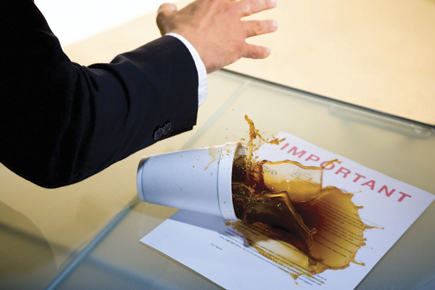Note from Eshrink’s Editor: My father had a reunion with his classmates who graduated from the Ohio State University Medical School back in the 50s (1956 I think). Last month, one of the few classmates left in his class sent him and article from the Wall Street Journal. Here is the link to the article https://www.wsj.com/articles/its-time-to-bring-back-the-asylum-ec01fb2?reflink=desktopwebshare_permalink. I’ve included a PDF version at the end of this blog post.
This letter is my dad’s response.
July 31, 2023
Dear Jim,
Thanks for the WSJ article regarding asylums. It resurrected memories of an incident which I wrote about previously (Passing the Torch) when during my residency my attending physician for whom I had a great deal of respect, invited me to share a cup of coffee with him. This was a bit unusual, and my first thought was to wonder what I had screwed up. Imagine my surprise when he announced that he would be retiring at the end of my rotation on his service and wanted me to be the first to know. The casual observer would likely have seen Dr. Ristine as a tough old bird rather than as warm and fuzzy, yet patients warmed to him instantly. He arrived daily at the hospital wearing a beret and driving a battered topless corvette which had lost the battle when he used it to pull out a stump on his farm.
Prior to his stint in academia, he had been assistant director of the department of mental health. His face was flush with anger as he described his frustrations in that job. He reported that he made occasional visits to the various state hospitals where he would often sit and cry as he witnessed what he saw in the “backwards.” His efforts to secure more funding for their treatment went unheeded by the legislature, for as he said, “Severely mentally ill folks don’t vote,” and therein lies the problem. It has oft been said that “you get what you pay for” and we pay very little considering the magnitude of the problem. The National Institute of Mental Health reports 5.5% of Americans suffer from a serious mental illness. Dr. Ristine seemed to be saying that it was now my turn to attempt to fix the problem, which was obviously way above my pay grade. Nevertheless, I was touched by his openness and still fondly recall that coffee break.
Surprise, surprise, more than a half century later, I must confess that I have also failed at fixing the problem, but Dr. Ristine had found the solution as had many more who had gone before. As with most contemporary problems the solutions can be found by following the money or in this case the lack of it. After the French Revolution Pinel unchained his patients, moved them out of the dungeons, and allowed them to exercise outside. Unfortunately, such ideas which came to be called the Moral Treatment of Insanity, were rare, and it is estimated that more than 1,000 psychotic folks were burned at the stake.
The heroine of the movement was Dorothea Dix who became a tireless advocate for the mentally ill in the mid nineteenth century. She addressed political bodies throughout the country and even convinced the Pope to launch an inquiry into hospital treatments of the mentally ill. She was very successful and largely through her efforts a system of asylums was built. These asylums were usually large attractive buildings with assurances that they would offer the latest in modern treatments. Unfortunately, there was a lack of effective treatments for the more serious cases and most, if not all, became permanent residents. It is difficult for us to imagine what it must have been like to deal with large groups of people so paranoid that they lived constantly in terror, and whose suspiciousness made it impossible for them to accept help. Little wonder that caregivers were driven to try unproven and sometimes garish treatments out of desperation, and that the introduction of Thorazine was greeted with enthusiasm. Within a year over 70% of psychiatric beds were emptied. Finally, there was a medication with proven ability to affect delusions and hallucinations, and it was widely hailed as a possible cure for schizophrenia.
Mr. Oshinsky begins his piece with a series of instances of murders at the hands of mentally ill persons. Such stories are real attention getters, especially the gorier ones, and will certainly get more press than articles about drunk drivers who kill. They will also provide more grist for the NRA crowd’s message that it is the mentally ill not guns that are the problem and reminds us to be careful around those with psychiatric problems as you never know which one is a homicidal maniac. In reality such assaults are rare and mentally ill folks are more likely to be victims rather than perpetrators of homicides. Such attitudes do little to eliminate the biases suffered by the mentally ill.
The author’s statement that our Mental Health system is a “mess” is accurate in my opinion, and it lacks provision for long term care, but the system has suffered mostly due to inadequate funding. As his last official bill signing prior to his assassination in 1963, President Kennedy signed a bill authorizing the establishment of Comprehensive Mental Health Centers throughout the country. The idea was to provide care in patients’ home communities. Eligibility for funding required the provision of 5 essential services including: inpatient, outpatient, social services, medication management, and emergency services. My hometown was the second in the nation to receive such a grant, and a decade later I was recruited to become its director. I was exhilarated by a staff who were dedicated to the welfare of our patients, and frustrated by local politics, the difficulty of recruiting psychiatrists to a rural area, but most of all by the limitations of our budget.
Kennedy’s bill was designed to provide operating expenses for a limited period of time, less than half the proposed facilities were ever built, Reagan eliminated the program as part of his budget squeeze, and now managed care pays for little more than crisis intervention with hospital stays averaging less than 2 days. I agree that our laws regarding involuntary commitment need to be revised. After all it is not unusual for such correcting laws to swing too far afield, and indeed in their zeal to “deinstitutionalize,” they failed to recognize there are still patients who require custodial care in spite of our best efforts. It is also true that without corrective action abusers will find their way into the system and Nurse Ratchets, though rare, do exist, and a community-based system is likely to shed more light. Which poses the question, without “One Flew Over the Cuckoo’s Nest” would we even be having this conversation.
The idea of asylums as he described them is attractive except for the fact that we already did that with poor results, and some would say to repeatedly do the same thing expecting a different result is the definition of insanity. Many have also posited that the location of asylums for the insane have always been located in out of the way places with the idea that out of sight is out of mind while congratulating ourselves that they are not chained in a dungeon…but thousands are in jail. Though we no longer burn witches at the stake, the stigma of mental illness is alive and well. I abhor the term behavioral health to describe mental illness which infers that behavior, not illness, is the problem. Unfortunately, it is aberrant behavior which usually gets the public’s attention rather than its cause. The term is widely used even by professionals including the mental health center where I last worked. My efforts to convince the staff that although efforts to convince a psychotic person that a fireplug was not a urinal were laudable, it was unlikely to get to the root of the problem. Medical insurance still offers minimal coverage for mental health problems. Employers widely discriminate. In many ways mental health problems are treated differently. If mental illness is illness, why not treat it as we do other chronic diseases? The answer of course remains the same as it was in Dr. Ristine’s day: it is too expensive.
The accomplishments of reformers back to the Middle Ages have always been short-lived by lack of adequate funding. Bedlam, one of the earliest hospitals from the Middle Ages was designed by a famous French architect. It was said to be a marvelous structure but eventually deteriorated due to lack of funds. Understaffed and underfunded, their financial problems were solved by the sale of tickets to the townspeople to come watch the lunatics, and bedlam was added to our vocabulary as a word signifying chaos.
Sorry about boring you with all that stuff, but sometimes when I get started it is hard to stop, and this diatribe will likely end up as a blog. It was great to hear from you and reassuring that someone is beating the grim reaper. I have no doubt that you will be around for another reunion. Do you have any idea how many of us are still alive? It seems to me that almost all of the guys I really knew are gone.
We just returned from our family vacation at North Carolina Beach. I think it might have been our 25th but the string was interrupted by the covid thing. All the kids, grandkids and their significant others were there, and the trip was a gift to Barb and I from the kids in honor of our 70th anniversary. We had a great time and I feel incredibly fortunate to have such a great bunch of people who actually care for a gimpy old fart.
I agree that the world is a mess right now and I have grave concerns that our progeny may not experience many of the blessings we have enjoyed, but spending time with these kids gave me hope for I think they are smarter than we were and more capable of cleaning up the mess than were we. Meanwhile, I see the buckeyes are rated #3. I think it’s time for a national championship.
Love,
Smitty and Barb
Below is PDF of the WSJ article dad references.





